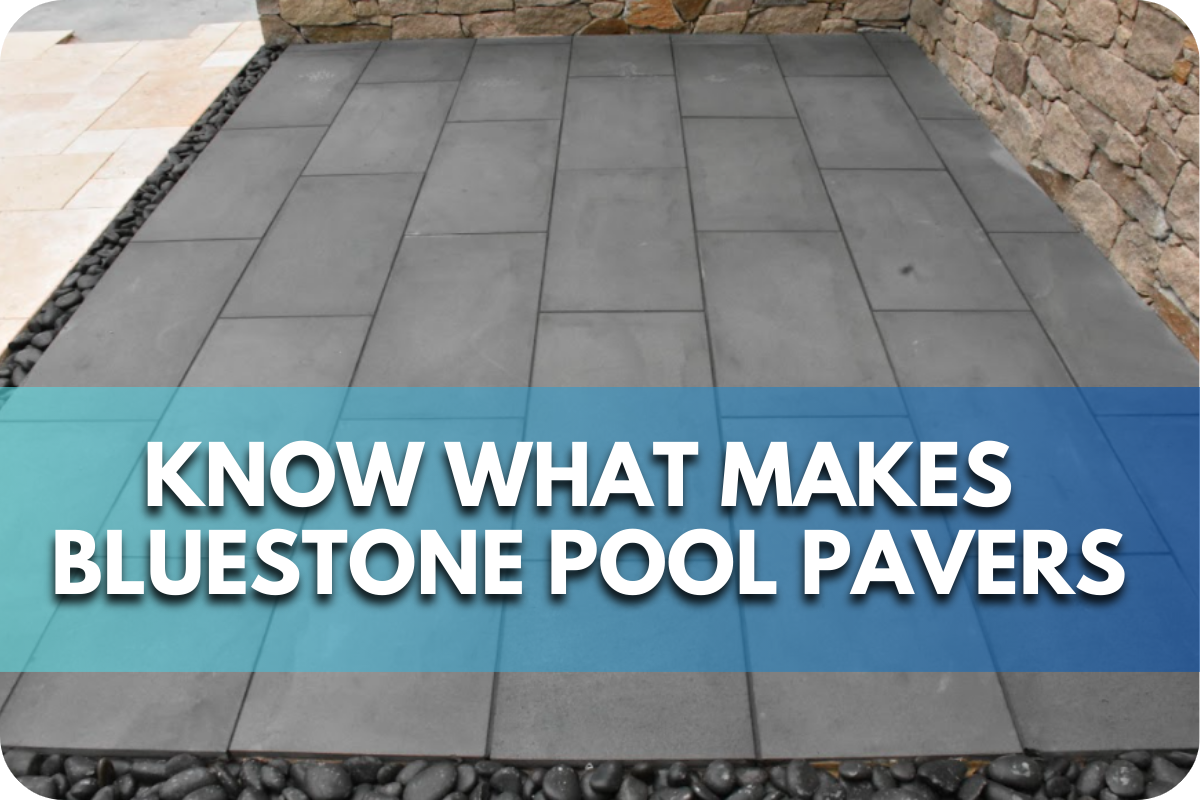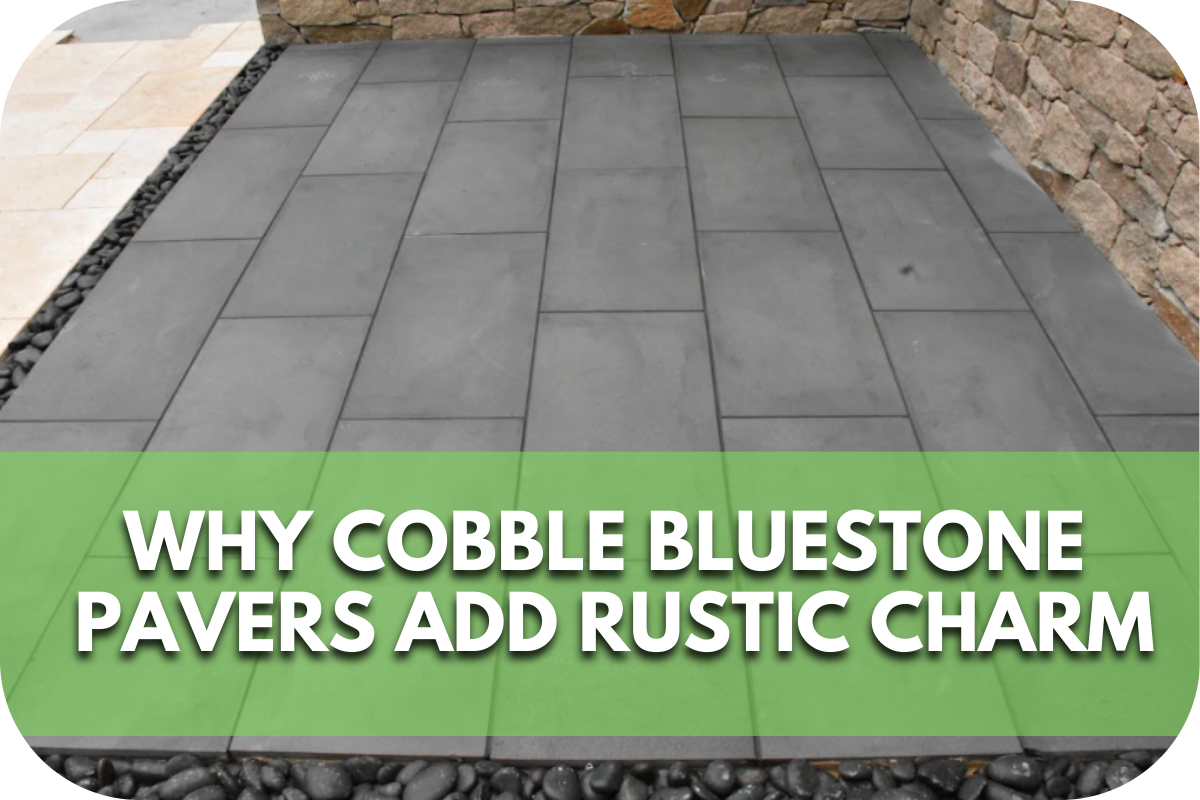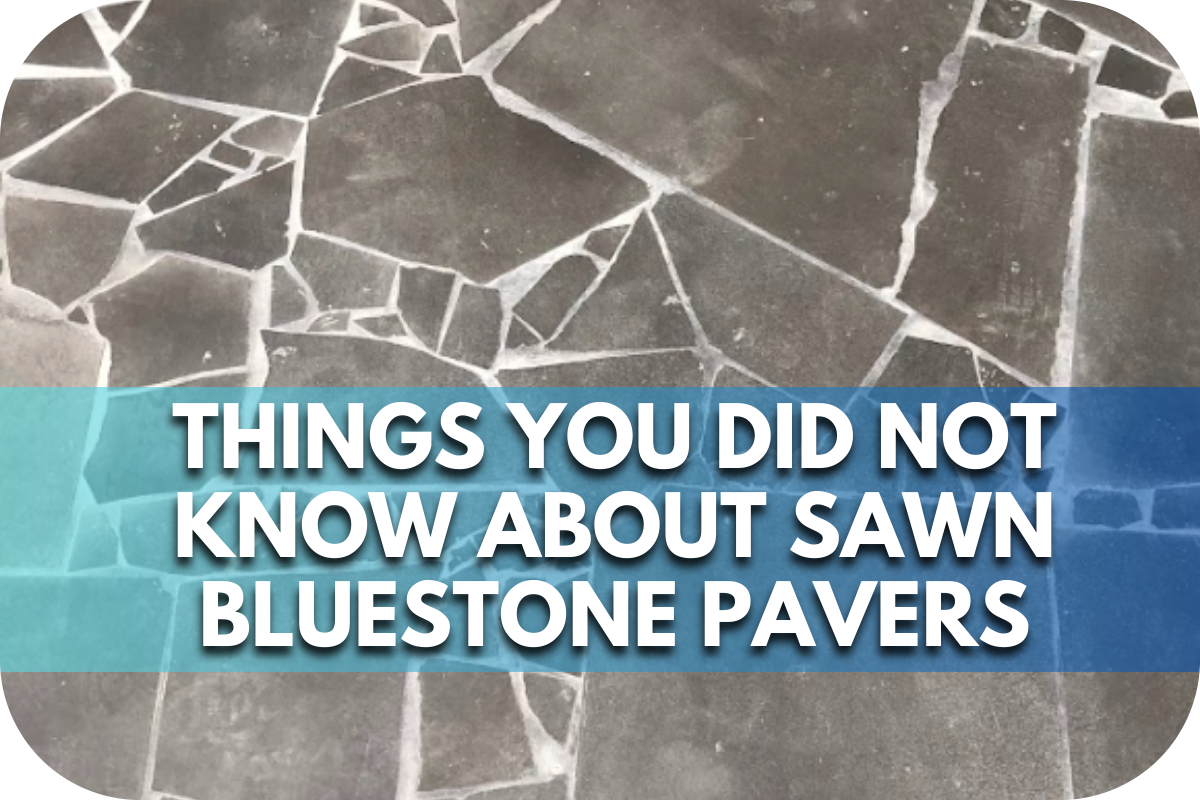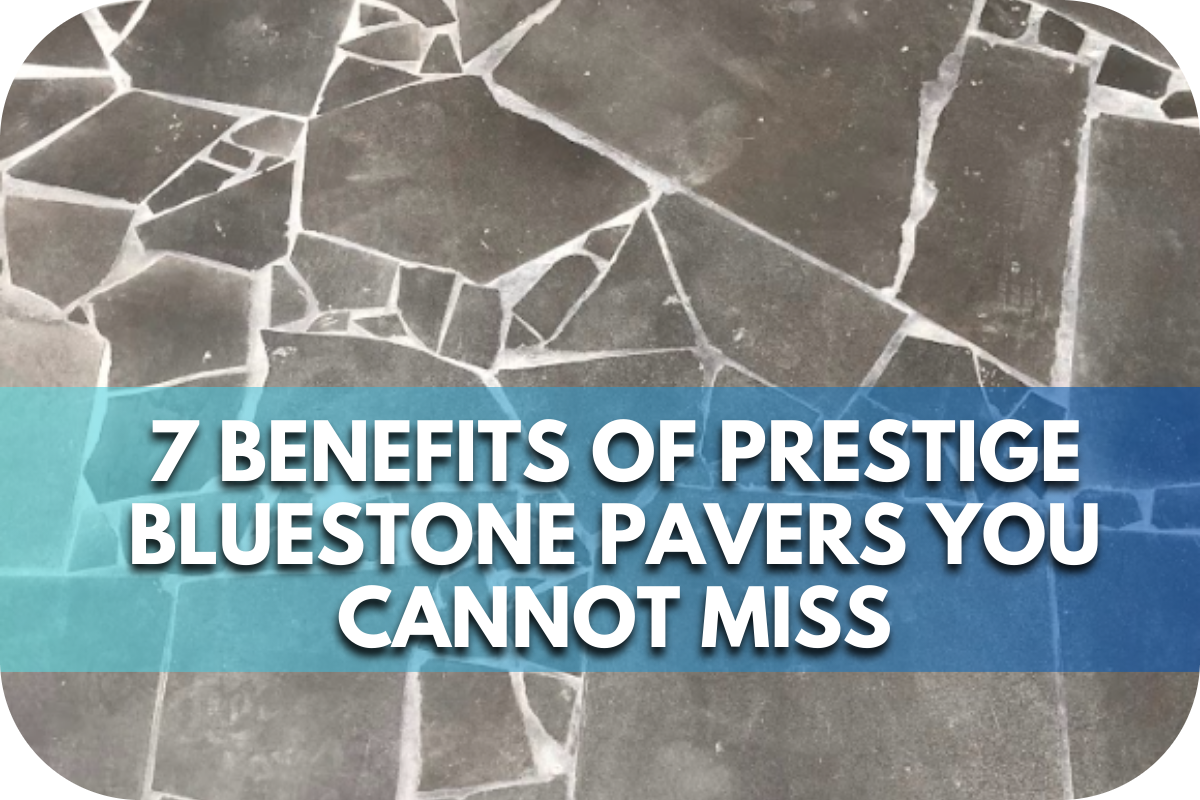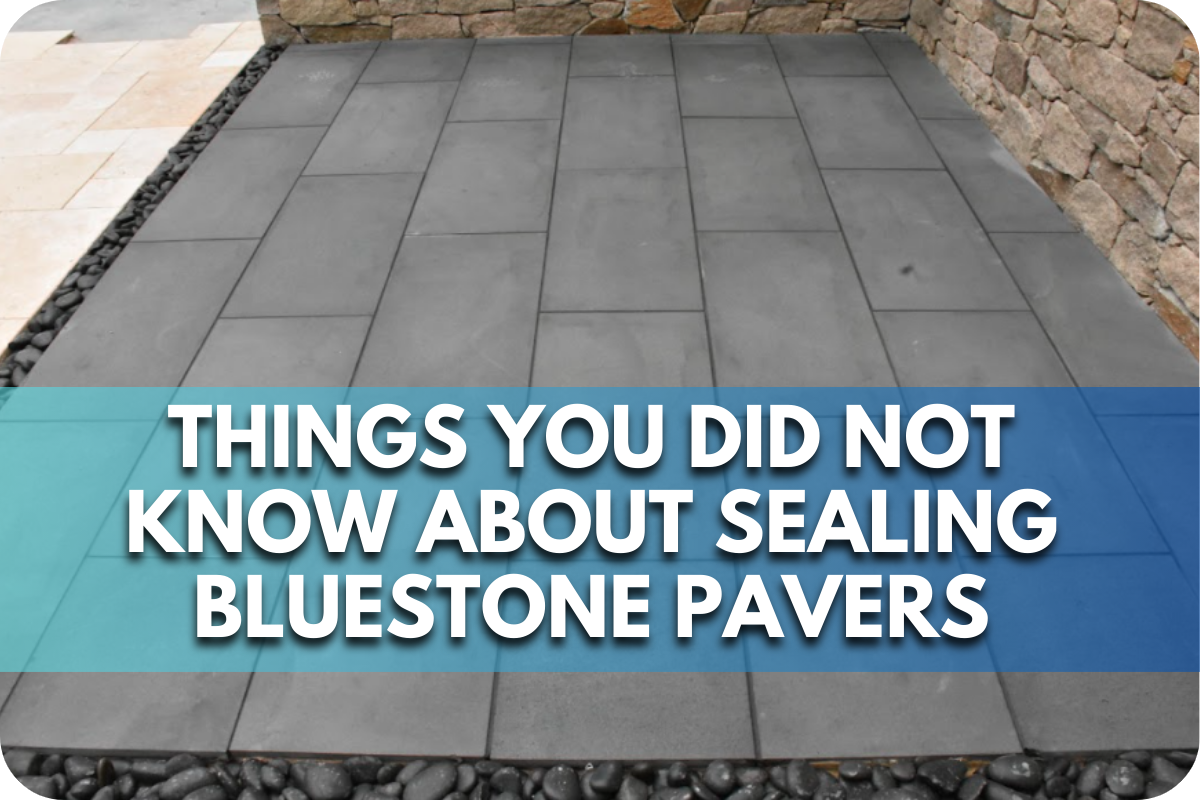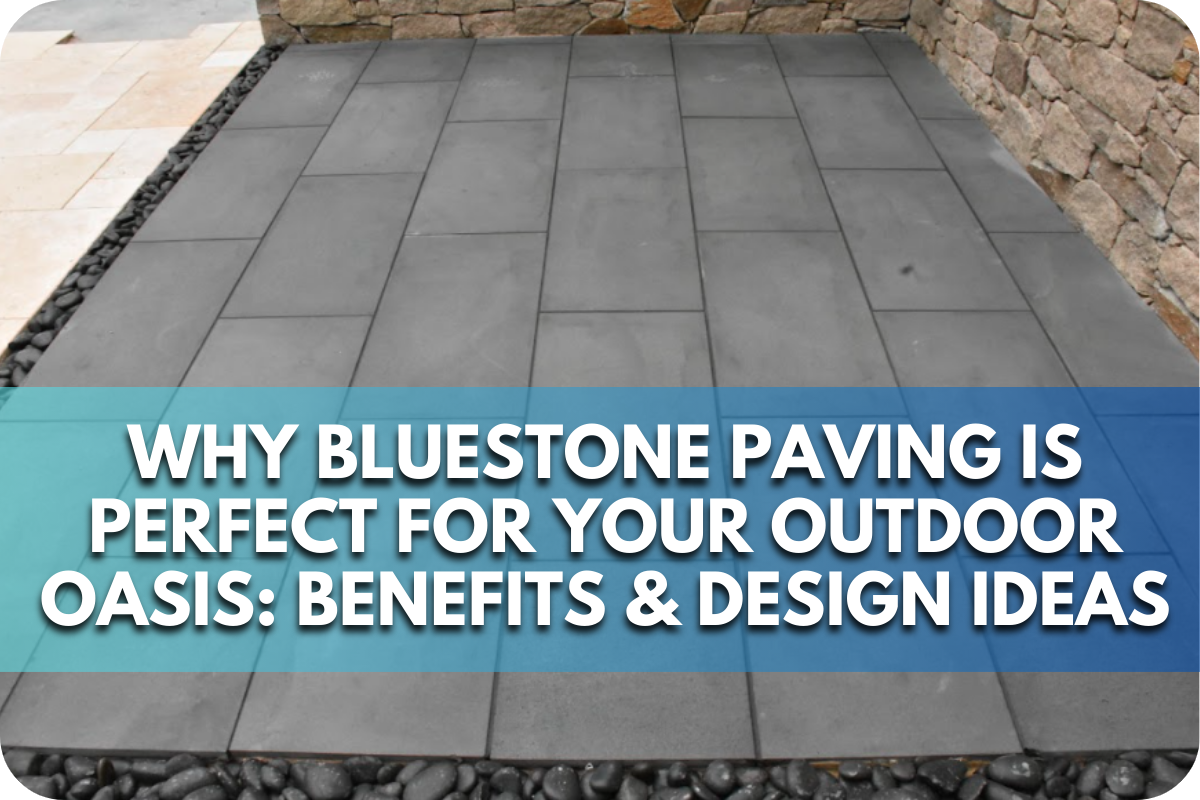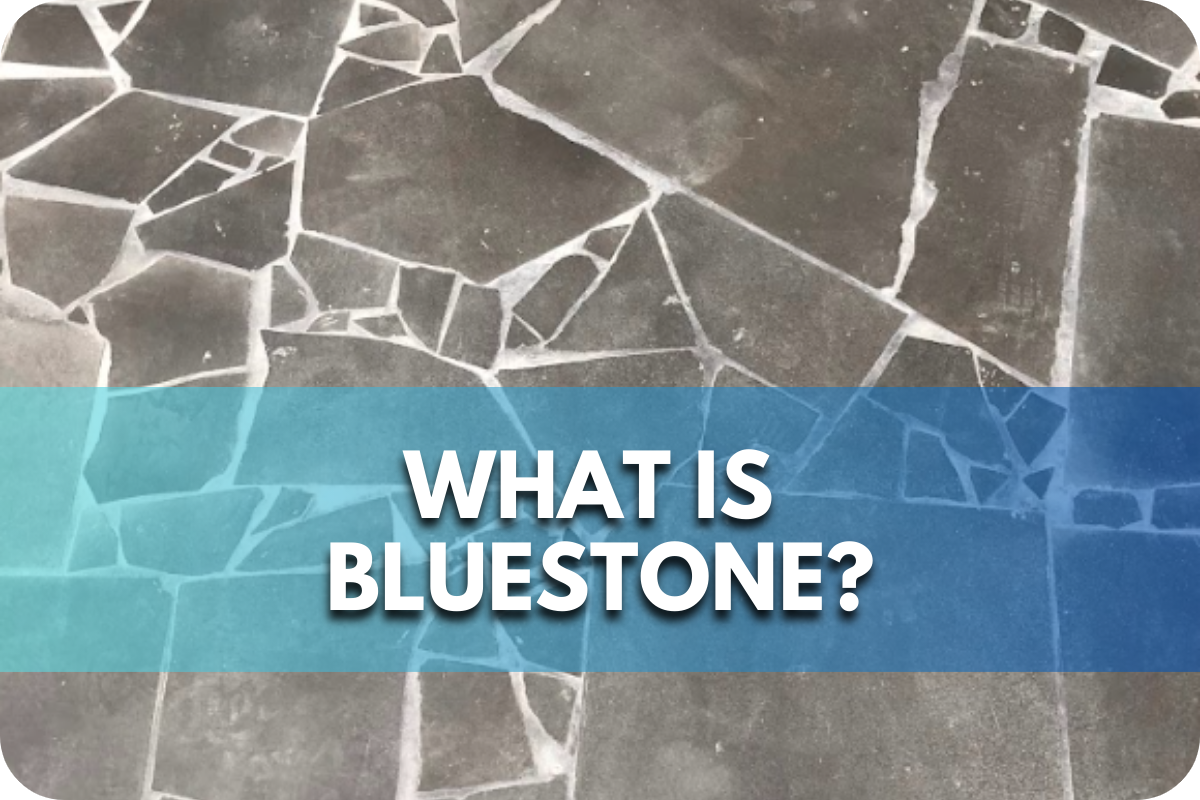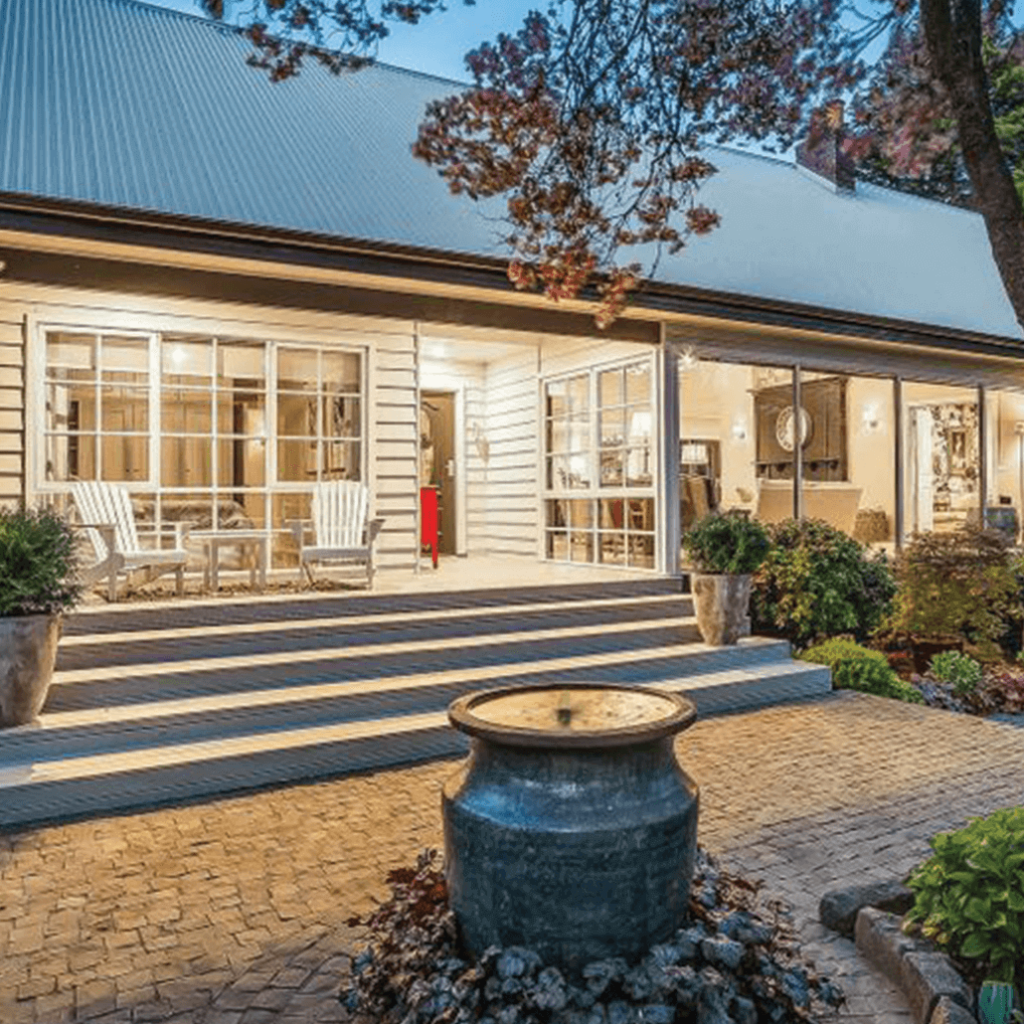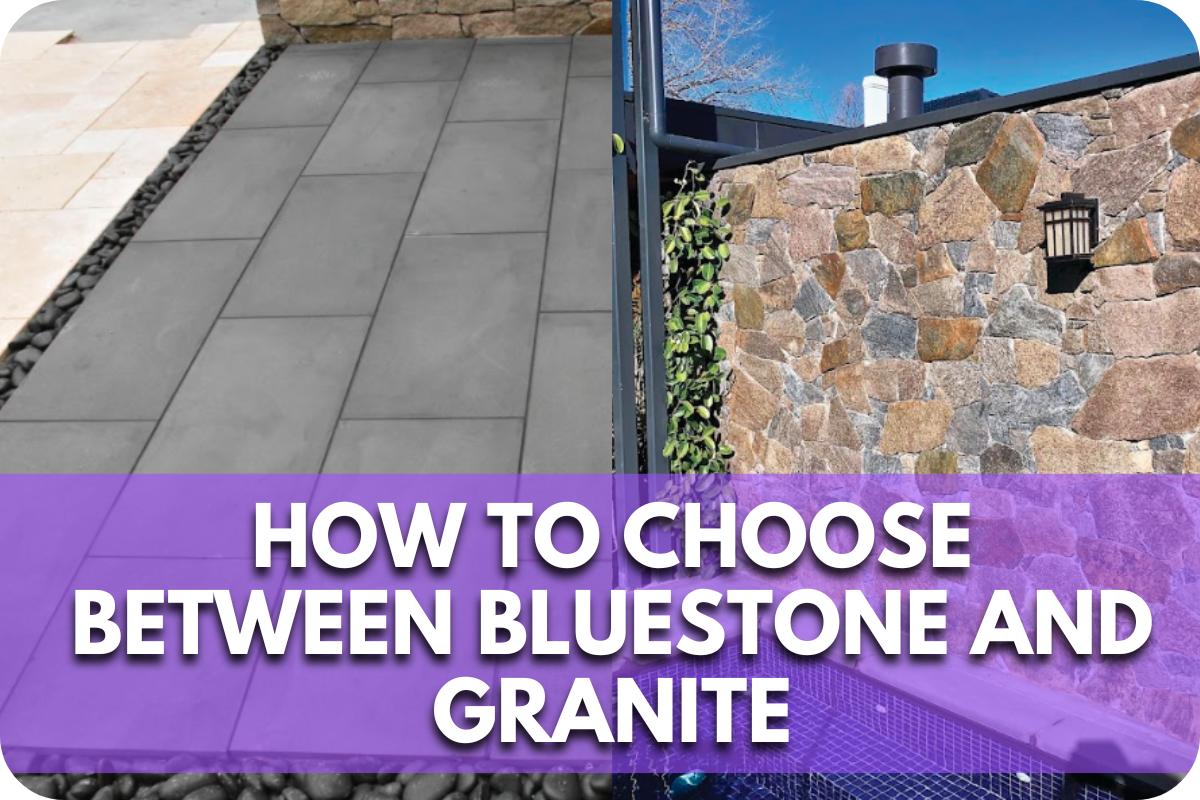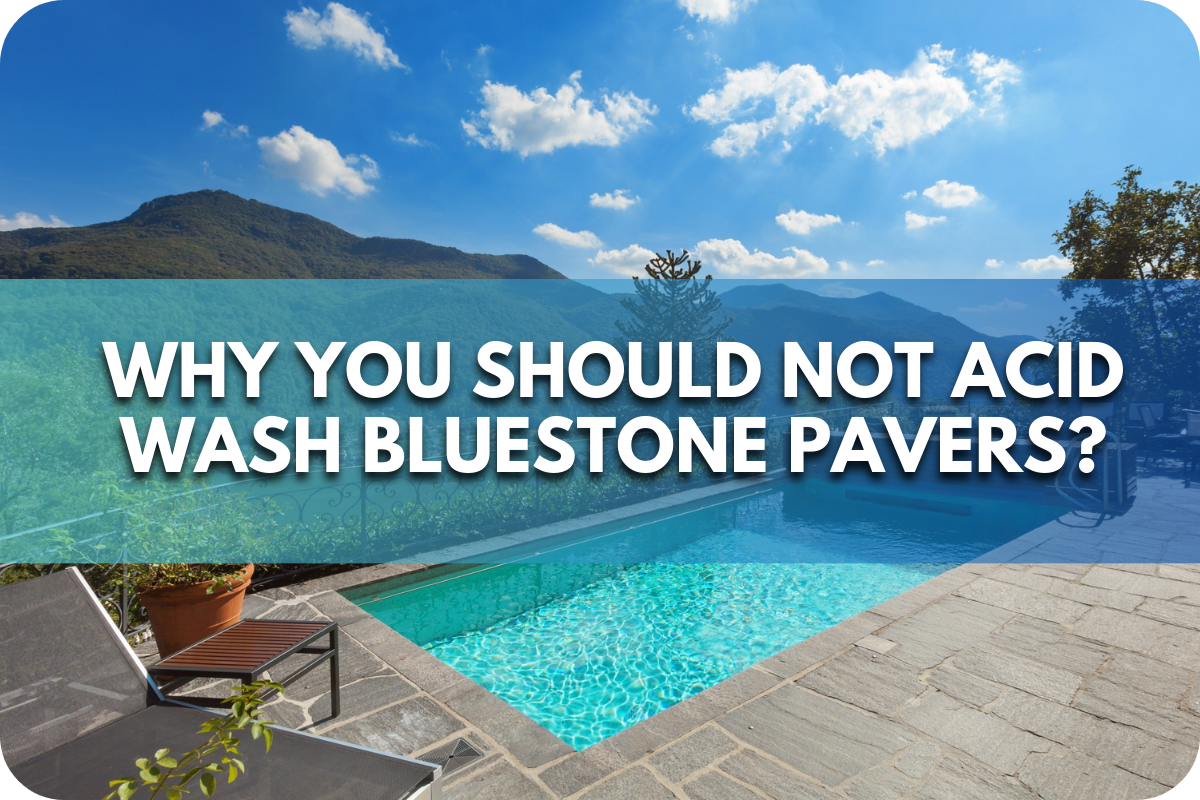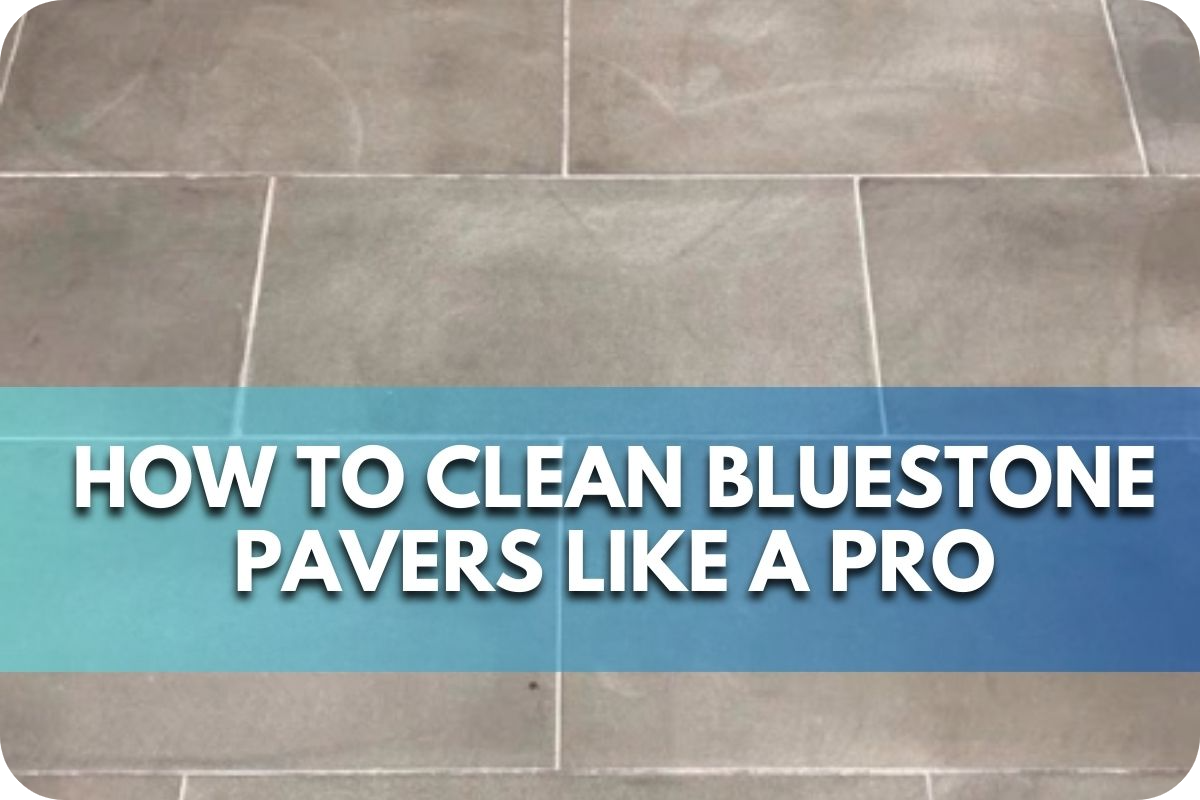Know What Makes Bluestone Pool Pavers the Best Choice for Australians
Choosing the right pool pavers for Australian climates can be challenging due to harsh weather conditions and intense sun exposure.
Many materials fade, crack, or become slippery, posing safety risks and requiring frequent replacement, which is costly and inconvenient.
Bluestone pool pavers offer the perfect solution with their exceptional durability, slip resistance, and timeless beauty. Discover why Bluestone is the best choice for Australian pools, combining resilience with aesthetic appeal to create a safe, long-lasting outdoor oasis.
Characteristics of Bluestone
Bluestone, a natural stone revered for its durability and aesthetic appeal, is ideal for pool pavers. Its dense composition ensures longevity, resisting cracking and chipping even under heavy use. Bluestone’s non-slip surface provides safety around the pool, making it a family-friendly option.
One of bluestone’s standout features is its versatility in colour and finish. Available in hues ranging from deep blue to earthy greys, it can complement various design styles. Whether honed, sawn, or natural cleft, the finishes offer different textures that enhance the poolside ambience.
Additionally, bluestone is resistant to weathering. It can withstand Australia’s harsh climate, from intense sun to heavy rain, without losing its structural integrity or aesthetic appeal. This resistance to extreme weather conditions makes it a practical and reliable outdoor option.
Bluestone’s thermal properties also contribute to its popularity. It remains cool underfoot, providing comfort during hot summer days. Easy maintenance is another key characteristic, as bluestone pavers require minimal upkeep to retain their beauty and functionality.
Read more about Bluestone (characteristics, types, why choose bluestone, etc.)
Benefits of Bluestone Pool Pavers
Bluestone pool pavers offer numerous benefits, making them ideal for Australian poolside environments. These advantages blend aesthetic appeal with practical functionality, ensuring a long-lasting and safe pool area.
- Durability: Bluestone is exceptionally durable and capable of withstanding heavy foot traffic, harsh weather conditions, and the wear and tear typical of poolside environments. Its robustness ensures that the pavers maintain their integrity and appearance over time, providing a cost-effective solution in the long run.
- Heat Resistance: Bluestone remains cool underfoot even in the intense Australian sun. This heat resistance enhances comfort, preventing burns and making walking barefoot around the pool pleasant, even during peak summer temperatures.
- Aesthetic Appeal: With its elegant blue-grey hues and natural variations, Bluestone adds a touch of sophistication to any pool area. Its timeless beauty compliments a wide range of architectural styles, enhancing the overall visual appeal of outdoor spaces.
- Low Maintenance: Bluestone requires minimal upkeep. Routine cleaning with water and mild detergents keeps it pristine, while periodic sealing can enhance its stain resistance and longevity.
- Environmental Friendliness: Bluestone is an environmentally friendly natural stone option. It is sustainably sourced and does not release harmful chemicals, making it a safe and eco-conscious choice for poolside installations.
Comparison with Other Pool Paving Materials
When choosing pool paving materials, durability, safety, and maintenance must be considered. Bluestone is significantly more durable and aesthetically appealing than concrete pavers.
Concrete may crack and discolour over time, whereas bluestone maintains its integrity and appearance, even under harsh conditions.
Travertine is another popular choice for pool areas. It is known for its natural beauty and cool surface. However, travertine is more porous than bluestone, making it prone to staining and requiring more frequent sealing.
Bluestone’s dense composition offers better resistance to moisture and staining, making it a lower-maintenance option.
Limestone provides a classic look but lacks the non-slip surface that bluestone offers. Safety around the pool is paramount, and bluestone’s textured finish ensures a non-slip surface, reducing the risk of accidents.
Additionally, limestone can fade and become uneven over time, while bluestone retains its colour and texture.
Granite is another durable option, but it tends to be more expensive and can become slippery when wet. Bluestone balances affordability and safety, providing a cost-effective solution without compromising quality.
Installation Process
The installation process for Bluestone pool pavers involves several meticulous steps to ensure a durable and aesthetically pleasing result. Here’s a detailed breakdown:
- Site Preparation: Begin by clearing the installation area of any debris, vegetation, or old paving materials. Excavate the ground to the required depth, typically around 100-150mm, to accommodate both the base and the Bluestone pavers.
- Base Layer: Lay a stable base to support the pavers. Spread a layer of crushed stone or gravel evenly across the excavated area. Compact this base layer using a plate compactor to ensure it is solid and level, which prevents shifting and settling over time.
- Bedding Layer: Apply coarse sand or fine gravel to the compacted base. This bedding layer, usually about 30-50mm thick, provides a smooth and even surface for laying the pavers. Level and compact this layer to ensure uniformity.
- Laying the Pavers: Begin laying the Bluestone pavers in your desired pattern. Place each paver carefully, ensuring they fit snugly together with minimal gaps. Use a rubber mallet to tap the pavers into place, ensuring they are level and even.
- Joint Filling: Once all pavers are laid, fill the joints with fine or polymeric jointing sand. Sweep the sand into the gaps and compact it using a plate compactor. This step stabilises the pavers and prevents movement.
- Sealing: Although optional, sealing the Bluestone pavers can enhance their durability and appearance. A high-quality sealer protects against stains and weathering and enhances the stone’s natural colour.
Tips for Maintaining Bluestone Pool Pavers
Maintaining Bluestone pool pavers ensures their longevity and keeps them looking pristine. Here are essential tips for proper care:
- Regular Cleaning: Sweep the pavers regularly to remove dirt, leaves, and debris. This prevents the buildup of organic material that can cause staining. Use a mild detergent mixed with water for periodic cleaning, and scrub the surface with a soft brush to remove any algae or mildew.
- Sealing: Applying a high-quality sealant helps protect Bluestone pavers from stains, moisture, and UV damage. Seal the pavers every 1-2 years, or as the manufacturer recommends, to maintain their appearance and durability. Ensure the pavers are clean and dry before applying the sealant.
- Stain Removal: For stubborn stains, use a poultice of baking soda and water or a specialised stone cleaner. Apply the mixture to the stained area, cover it with plastic wrap, and let it sit for 24 hours before rinsing. Avoid using harsh chemicals or acidic cleaners that can damage the stone.
- Weed and Moss Control: Regularly inspect the joints between pavers for weeds and moss. Remove any growth by hand or use a non-toxic weed killer. Keeping the joints clean helps maintain the pavers’ appearance and prevents root damage.
- Addressing Damage: Promptly address any cracks or chips to prevent further damage. Stone repair kits often manage small repairs, while more extensive damage might require professional attention.
- Winter Care: In colder climates, avoid using salt or chemical deicers on Bluestone pavers. Instead, sand is used to provide traction and prevent slips. This helps protect the stone from potential damage caused by freeze-thaw cycles.
Why Bluestone is Ideal for the Australian Climate
Bluestone is the perfect choice for Australian pool pavers due to its remarkable durability and resilience against diverse climate conditions.
Known for its dense composition, bluestone effectively withstands extreme temperatures, from the scorching summer to the cooler winter months, ensuring longevity and minimal maintenance.
This natural stone is highly resistant to weathering, so it maintains its structural integrity and aesthetic appeal even under prolonged exposure to harsh sunlight and heavy rainfall.
Additionally, bluestone’s excellent slip resistance is a crucial safety feature for pool areas, providing a secure surface even when wet. This characteristic is particularly beneficial in a country where outdoor living spaces are integral to the lifestyle, and pool safety is paramount.
Moreover, bluestone’s thermal properties ensure it remains cool underfoot, making it comfortable to walk on during hot summer days. Its natural, earthy tones seamlessly blend with the Australian landscape, enhancing the overall aesthetic of outdoor spaces.
Environmental Considerations
Choosing Bluestone pool pavers is not only a practical and aesthetic decision but also an environmentally conscious one. Here are the key environmental considerations:
- Natural Material: Bluestone is a natural material, which means it is sourced directly from the earth without undergoing extensive manufacturing processes. This reduces the carbon footprint associated with production, making it a more sustainable option compared to synthetic materials.
- Longevity: Bluestone’s durability means it has a long lifespan, reducing the need for frequent replacements. This longevity minimises waste and the environmental impact of producing and disposing of less durable materials.
- Thermal Properties: Bluestone’s ability to stay cool underfoot reduces the need for artificial cooling methods around pool areas. This natural thermal property can contribute to lower energy consumption, which benefits the environment.
- Low Maintenance: Bluestone requires minimal maintenance, which results in fewer chemical cleaners and water usage. The reduced need for harsh chemicals helps to prevent potential environmental contamination.
- Recyclability: Bluestone can be recycled or repurposed at the end of its life cycle, reducing its environmental impact. This makes it a more sustainable choice, as it can be reintroduced into the environment without harming it.
- Sustainable Sourcing: Many suppliers now focus on sustainable quarrying practices, ensuring that the extraction of Bluestone is done in a way that minimises environmental disruption. Choosing Bluestone from reputable sources supports these sustainable practices.
Conclusion
Bluestone pool pavers offer unmatched durability, safety, and aesthetic appeal, making them ideal for the Australian climate. Enhance your outdoor space with the timeless beauty and practicality of bluestone. Explore our premium range of bluestone pavers at Splendour In Stone and transform your pool area into a stunning, safe haven.

